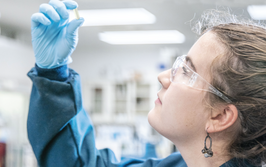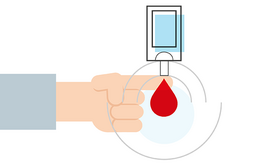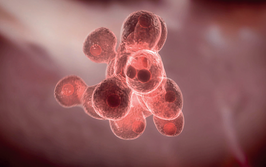
In the NIR Future
Could near infrared chemical imaging offer improved ‘real-time’ monitoring of tablet manufacture?
The pharmaceutical industry is in continuous need of improved process analytical technology (PAT) for monitoring, analysis, understanding, and control. We spoke to Himmat Dalvi, (Associate Professor, Department of Chemical Engineering and Biotechnology Engineering, and Pfizer Industrial Research Chair at the Université de Sherbrooke, Canada) about a new analytical tool – near-infrared chemical imaging (NIR CI) – that could help the manufacture of more uniform tablets (1).
What inspired your research?
Pharmaceutical dosage form manufacturing is undergoing a paradigm shift, from quality by testing to quality by design. The new approach demands more product and process understanding, process monitoring, analysis and control rather than simply manufacturing a product using predetermined fixed process parameters and “passing” or “failing” based on quality specifications. Our main purpose in this research was to evaluate the feasibility of a new process analytical tool, NIR CI (which can provide spectral and spatial information), against existing technology, NIRS (which provides spectral information only), for feed frame monitoring (1).
Why is it important to monitor powder potency inside a feed frame?
The feed frame drives powder blends into tablet moulds. It operates within a high-speed industrial tablet press, and offers the last opportunity to examine the powder blend before tablet compression. However, it also applies considerable strain onto the moving powder blends, which can lead to undesirable quality phenomena, such as powder segregation. To protect the final product quality, we need to discover occurrences like this in real time, so that intervention is possible.
What are the limitations of NIRS?
NIRS has not yet developed into a fully robust and understood PAT tool for feed-frame monitoring, as parameters, such as spectral baseline variations and the variable location of NIR probes on the feed frame, lead to variable concentration predictions from lab to production, or batch to batch.
How did NIR CI compare?
NIR CI not only performs on a par to NIRS for concentration monitoring, but also shows potential in probing local concentration variations, thanks to the larger sample area it makes available to us.
What difference could your research make?
Our research proves the feasibility of NIR CI for testing moving powder samples, while also allowing analysis of an increased sample area – thus opening doors for turning NIR CI into a robust PAT tool for feed-frame monitoring. It provides a visual presentation of the process, which could be very useful for process operators in spotting any adverse quality phenomena, such as segregation, in real time. It could also be used for similar operations involving powder samples in motion.
- Himmat Dalvi et al., “Concentration monitoring with near infrared chemical imaging in a tableting press”, J Spectral Imaging, 7, a5 (2018).

Over the course of my Biomedical Sciences degree it dawned on me that my goal of becoming a scientist didn’t quite mesh with my lack of affinity for lab work. Thinking on my decision to pursue biology rather than English at age 15 – despite an aptitude for the latter – I realized that science writing was a way to combine what I loved with what I was good at.
From there I set out to gather as much freelancing experience as I could, spending 2 years developing scientific content for International Innovation, before completing an MSc in Science Communication. After gaining invaluable experience in supporting the communications efforts of CERN and IN-PART, I joined Texere – where I am focused on producing consistently engaging, cutting-edge and innovative content for our specialist audiences around the world.


















